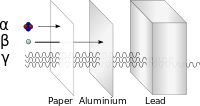
Photo from wikipedia
Abstract Ferromanganese nodules are important pedogenic indicators in soil. They are usually characterized by clearly expressed ring structures. Although these features are believed to be significant environmental fingerprints, the reasons… Click to show full abstract
Abstract Ferromanganese nodules are important pedogenic indicators in soil. They are usually characterized by clearly expressed ring structures. Although these features are believed to be significant environmental fingerprints, the reasons for their formation still await interpretation. Here, we interpreted these fingerprints by the synergistic use of noninvasive synchrotron-radiation based techniques and advanced analytical methods. The results revealed that the soil nodules were formed due to the filling of the pore networks of the soil matrix that was mediated by both abiotic and biotic factors during alternative soil wetting-drying cycles. The ring structures are therefore the memories of the soil redox history. The variations in elemental compositions of the ring structures indicates the soil moisture conditions at the time of formation. Their porosity reflects the rate of change in soil redox potential and the soil redox potential is mainly affected by precipitation.
Journal Title: Chemical Geology
Year Published: 2020
Link to full text (if available)
Share on Social Media: Sign Up to like & get
recommendations!